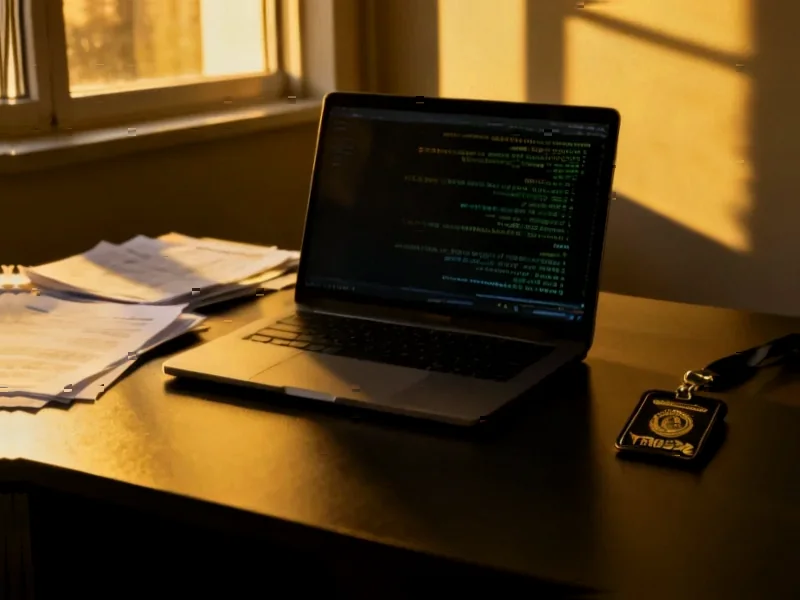According to TechCrunch, Peter Williams, the 39-year-old former general manager of L3Harris subsidiary Trenchant, pleaded guilty last week to stealing and selling eight zero-day exploits worth approximately $35 million to a Russian broker for just $1.3 million in cryptocurrency. The Australian citizen, known internally as “Doogie,” abused his “super-user” access to Trenchant’s secure networks between 2022 and July 2025, using external hard drives to exfiltrate the sensitive hacking tools from offices in Sydney and Washington D.C. Williams reportedly framed a subordinate by firing him for allegedly stealing Chrome exploits, then led the internal investigation into the very leaks he caused, while using encrypted channels and the alias “John Taylor” to communicate with the Russian broker, likely Operation Zero. This case reveals fundamental weaknesses in how Western defense contractors protect their most valuable cyber weapons.
The Insider Threat Problem in Cybersecurity
The Williams case represents a textbook example of how traditional cybersecurity defenses fail against trusted insiders. Despite Trenchant implementing multi-factor authentication, access controls, and air-gapped systems—measures that would typically thwart external attackers—Williams’ privileged position rendered these protections meaningless. His “super-user” status allowed him to both monitor security logs and bypass controls, creating what security professionals call the “trusted insider paradox.” This isn’t just about one rogue employee; it’s about systemic failure in how organizations manage privileged access. The very people who need extensive access to perform their jobs are often the ones who can cause the most damage when they turn malicious.
The Distorted Economics of Zero-Day Markets
Williams’ decision to sell $35 million worth of exploits for only $1.3 million highlights the bizarre economics of the cyber weapons trade. While legitimate bug bounty programs like Google’s or Apple’s offer substantial rewards—typically in the hundreds of thousands—the underground market operates on different principles. As previous reporting on Azimuth Security revealed, these tools are developed at enormous cost for specific government clients, making their commercial value difficult to assess. The Russian broker likely understood that Williams was selling stolen goods and exploited his desperation, knowing he couldn’t shop the exploits to multiple buyers without raising suspicion. This creates a buyer’s market for stolen cyber weapons, where thieves accept pennies on the dollar simply because they have no other viable buyers.
Systemic Organizational Security Failures
What’s most alarming about this case isn’t just Williams’ actions, but the complete lack of oversight that enabled them. Multiple former employees described Williams as operating without supervision, with one noting that “whoever is the general manager would have unfettered access to everything.” This reflects a fundamental misunderstanding of security principles in high-stakes environments. The fact that Williams could both investigate the leaks he caused and frame a subordinate suggests Trenchant lacked basic segregation of duties and oversight mechanisms. His background at the Australian Signals Directorate should have made him subject to more scrutiny, not less. Organizations often make the mistake of trusting senior personnel implicitly, creating exactly the conditions that enable such betrayals.
Geopolitical Consequences and Intelligence Compromise
The transfer of these exploits to Russian entities represents more than just corporate theft—it’s a direct threat to Western intelligence capabilities. When tools developed for Western governments end up in adversary hands, multiple layers of damage occur. First, the specific exploits become useless against Russian targets once Moscow understands how they work. Second, Russian intelligence can reverse-engineer these tools to understand Western capabilities and develop countermeasures. Third, as Operation Zero’s public bounty offers demonstrate, these tools can be deployed against other targets, potentially including Western citizens and allies. The case reveals how the private cyber weapons industry has become an extension of national security apparatuses, making corporate breaches into national security incidents.
Impact on the Offensive Security Industry
This scandal will inevitably force a reckoning throughout the offensive cybersecurity sector. Companies like Trenchant—formed through the acquisition of Azimuth and Linchpin Labs—rely on trust and discretion to maintain their government contracts. The revelation that a senior executive could systematically steal and sell their crown jewels will prompt clients to demand stricter oversight and auditing. We’re likely to see increased government regulation, more rigorous background checks, and potentially the implementation of technical controls that limit even senior executives’ ability to access and export sensitive tools. The industry’s business model, which depends on developing tools that can bypass the world’s most sophisticated digital defenses, now faces existential questions about whether it can adequately defend its own assets from internal threats.
The Path to Better Protection
Moving forward, defense contractors must implement what security experts call “zero trust” architectures even for their most trusted personnel. This means eliminating permanent super-user access, implementing behavioral monitoring that detects unusual data access patterns, and creating technical barriers that prevent any single individual from exfiltrating sensitive materials. More importantly, organizations need to recognize that technical controls alone are insufficient—cultural and procedural changes are equally critical. Regular independent audits, mandatory oversight for all personnel regardless of rank, and creating environments where questioning unusual behavior is encouraged could prevent future incidents. The Williams case serves as a stark reminder that in cybersecurity, the most dangerous threats often come from inside the castle walls.




